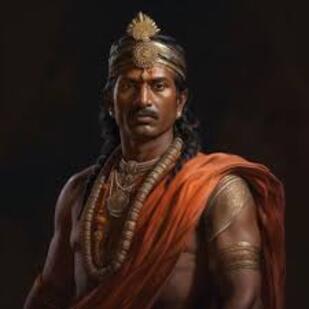 Mara Varman Sundara Pandya, often simply referred to as Sundara Pandya, holds a significant place in the annals of South Indian history, particularly in the context of the Pandya dynasty. His reign, spanning the 13th century, marked a period of cultural and political significance in the region of Tamil Nadu, leaving a lasting impact on the socio-economic fabric of the time.
Mara Varman Sundara Pandya, often simply referred to as Sundara Pandya, holds a significant place in the annals of South Indian history, particularly in the context of the Pandya dynasty. His reign, spanning the 13th century, marked a period of cultural and political significance in the region of Tamil Nadu, leaving a lasting impact on the socio-economic fabric of the time.
The Pandya dynasty, one of the oldest ruling houses in South India, traces its origins back to the early centuries of the Common Era. Known for their patronage of literature, arts, and architecture, the Pandyas wielded significant influence in the Tamil lands, often engaging in fierce battles with their neighboring kingdoms for supremacy.
Mara Varman Sundara Pandya ascended to the throne during a period of political turmoil and internal strife within the Pandya kingdom. His reign, which is estimated to have begun around the 13th century, marked a turning point in the history of the dynasty as he undertook ambitious military campaigns to expand his territory and consolidate his power.
One of the notable achievements of Mara Varman Sundara Pandya was his successful military campaigns against the rival Chola and Chera kingdoms, which helped establish the Pandya dynasty as a major political force in the region. His strategic alliances with other regional powers further strengthened his position, enabling him to govern his realm with stability and prosperity.
In addition to his military prowess, Mara Varman Sundara Pandya was also known for his interest in promoting the arts and culture of his kingdom. Under his patronage, literature flourished, with poets and scholars receiving generous support from the royal court. The Pandya capital, Madurai, became a hub of intellectual activity, attracting artists and writers from far and wide.
The architectural legacy of Mara Varman Sundara Pandya can be seen in the numerous temples and monuments built during his reign. The intricate carvings and sculptures adorning these structures bear testimony to the craftsmanship and artistic vision of the artisans of that era. Some of the most famous temples attributed to his patronage include the Meenakshi Temple in Madurai and the Nellaiappar Temple in Tirunelveli.
Despite his military successes and contributions to the cultural heritage of South India, Mara Varman Sundara Pandya's reign was not without challenges. Internal dissent and external threats posed constant challenges to his authority, requiring him to constantly navigate the complex political landscape of medieval South India.
The legacy of Mara Varman Sundara Pandya continues to be remembered and celebrated in the annals of South Indian history. His contributions to the political, cultural, and architectural development of the region have left an indelible mark, inspiring generations of scholars and historians to study and admire the achievements of this illustrious ruler.
In conclusion, Mara Varman Sundara Pandya stands out as a significant figure in the history of the Pandya dynasty and South India as a whole. His reign exemplifies the complex interplay of power, culture, and heritage that defined the medieval kingdoms of the region, leaving behind a legacy that continues to inspire awe and admiration.




